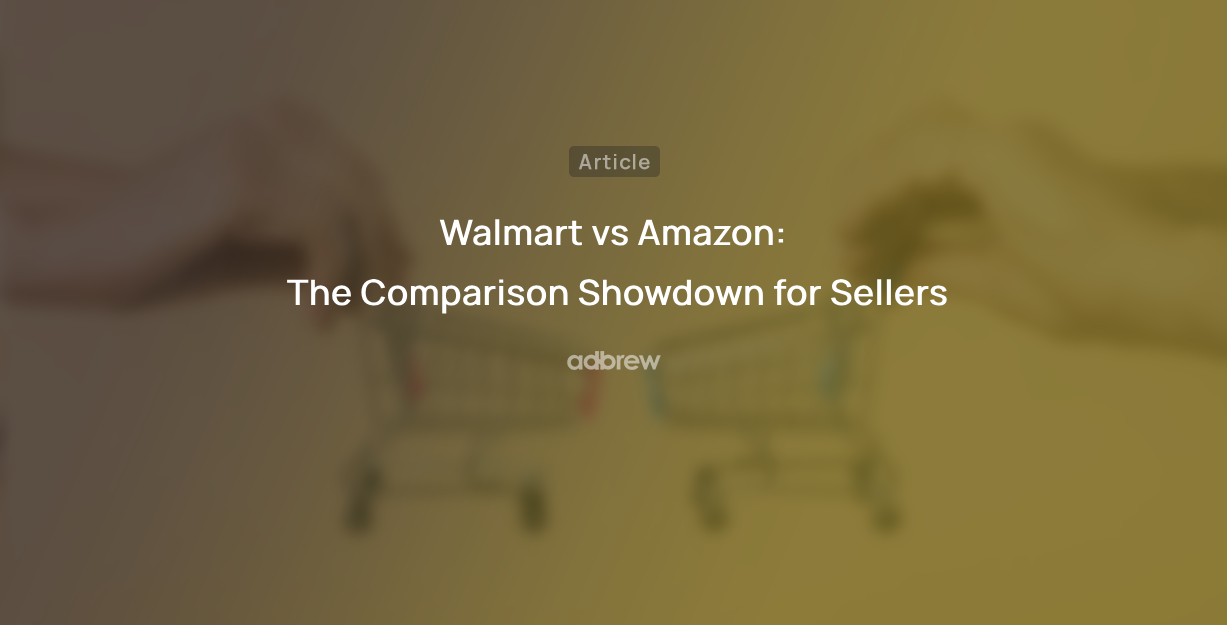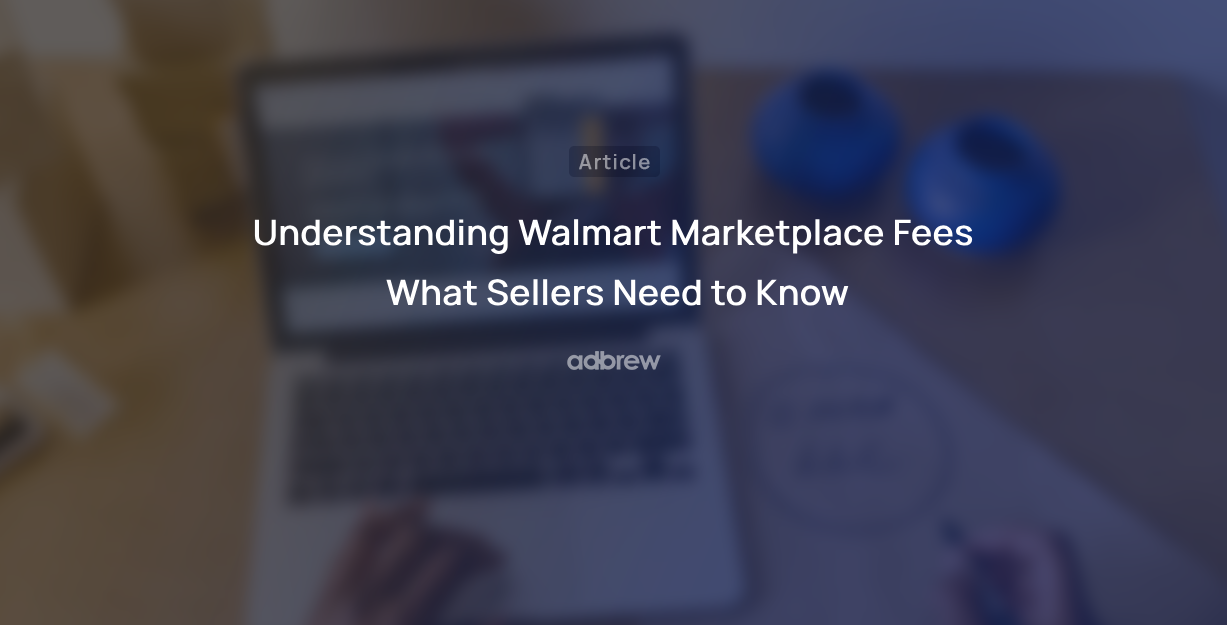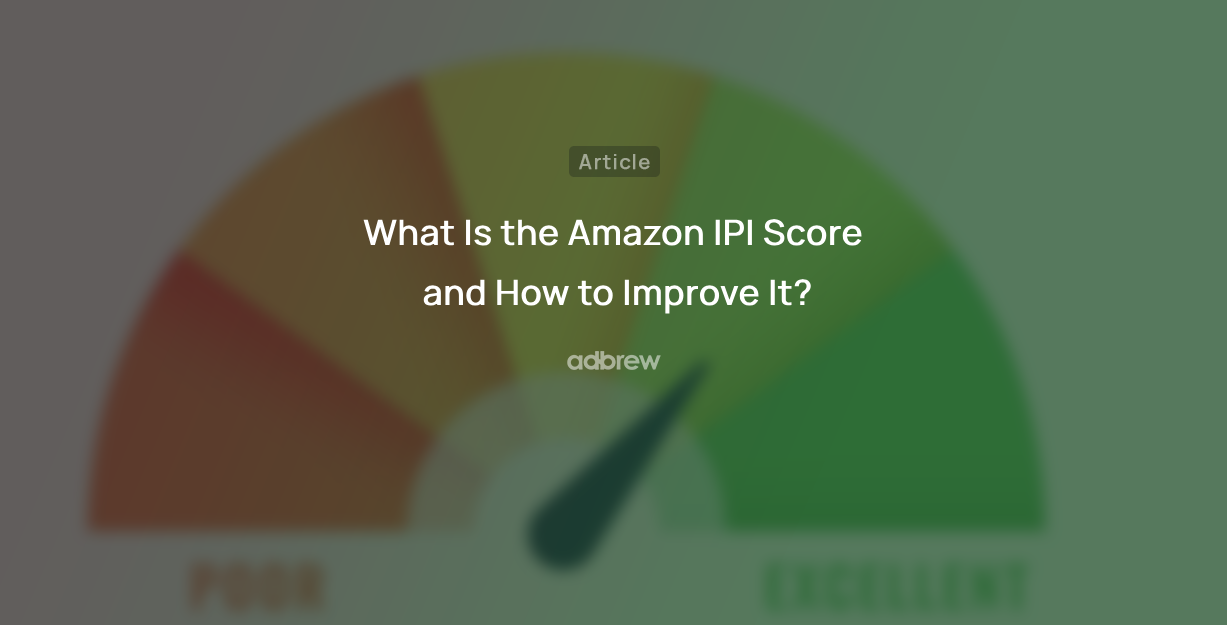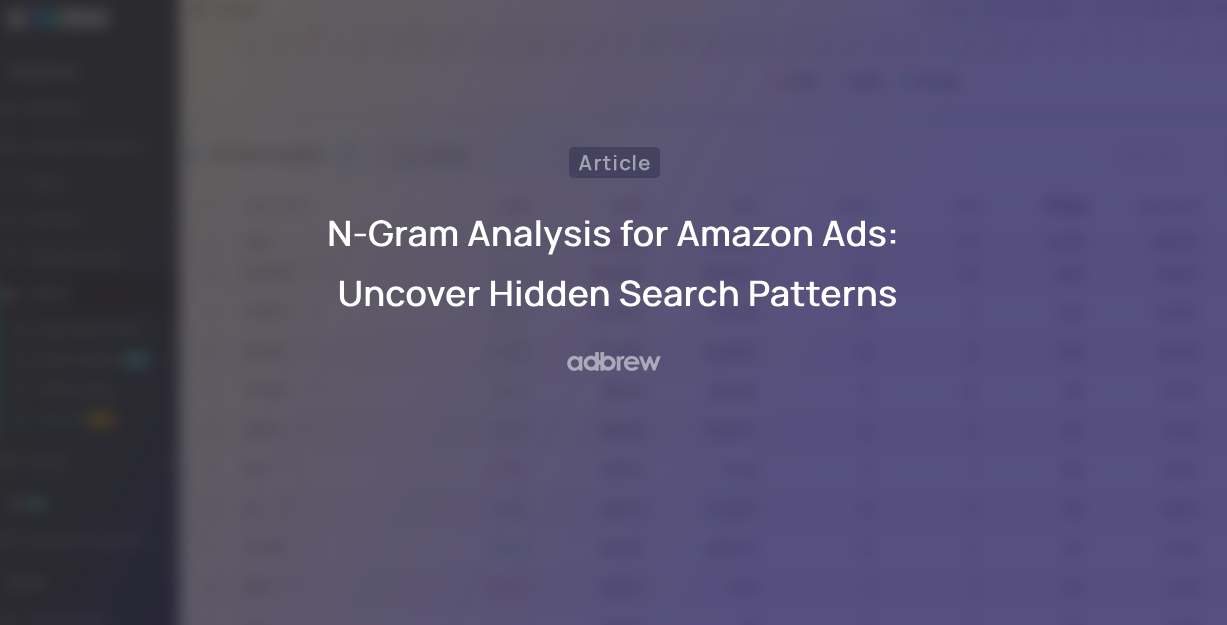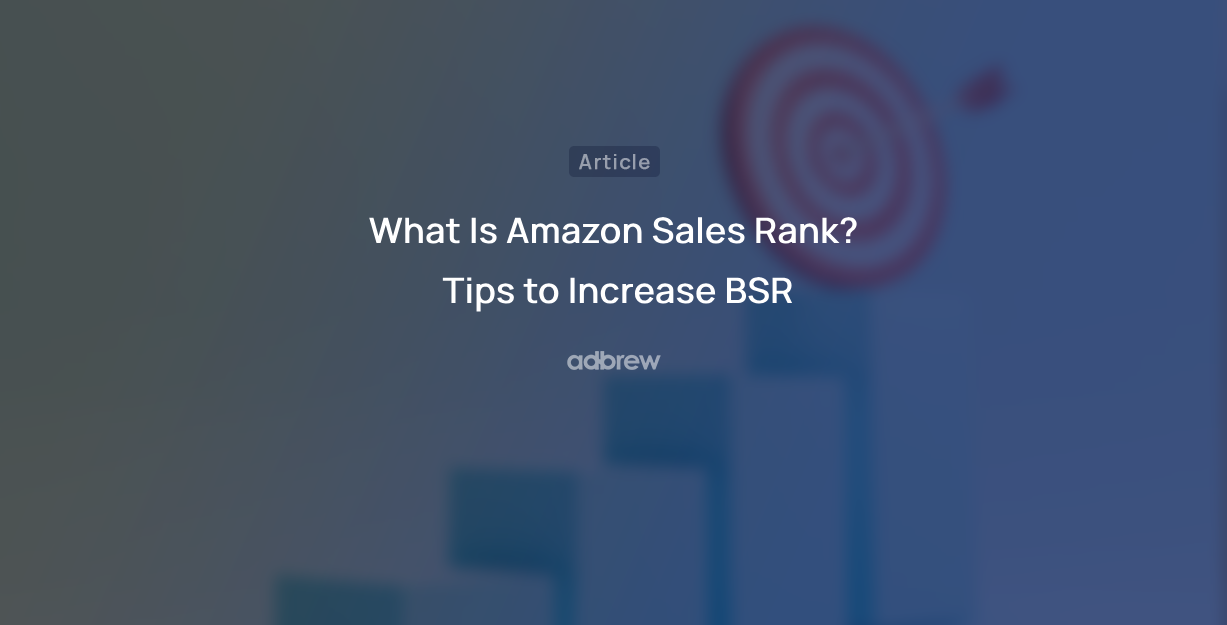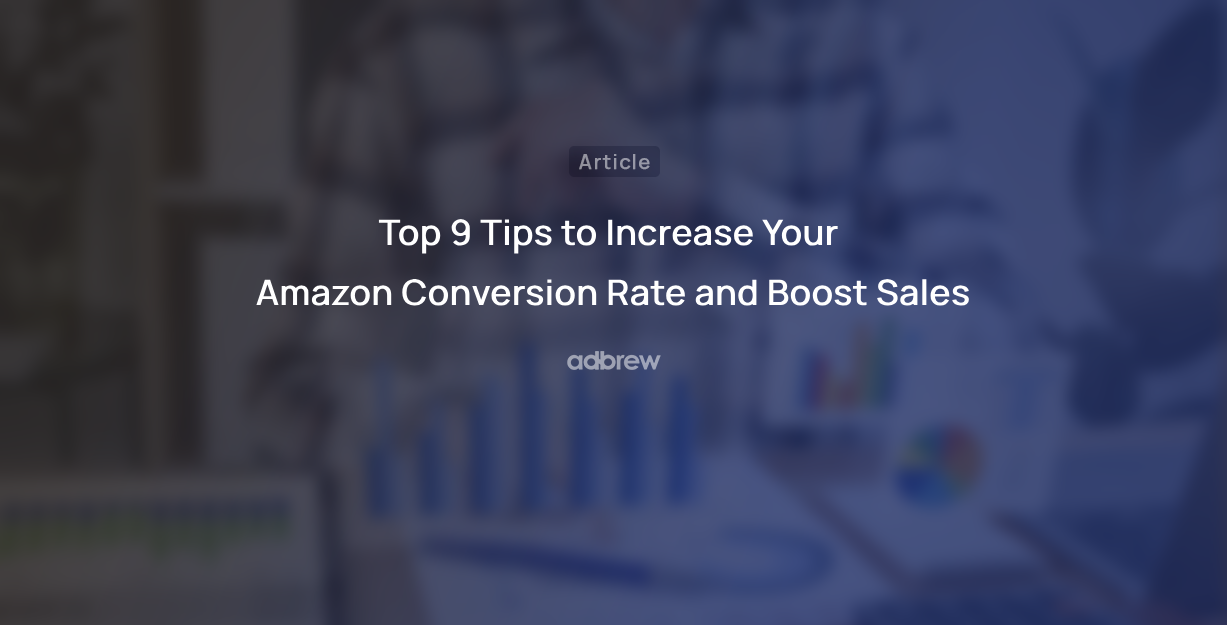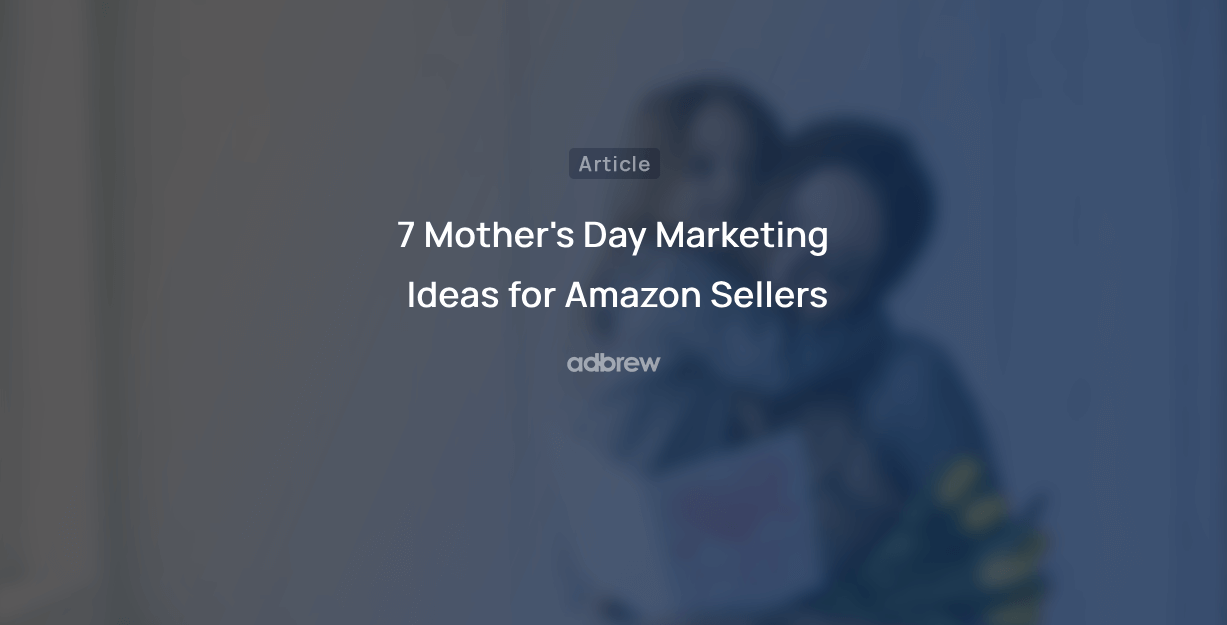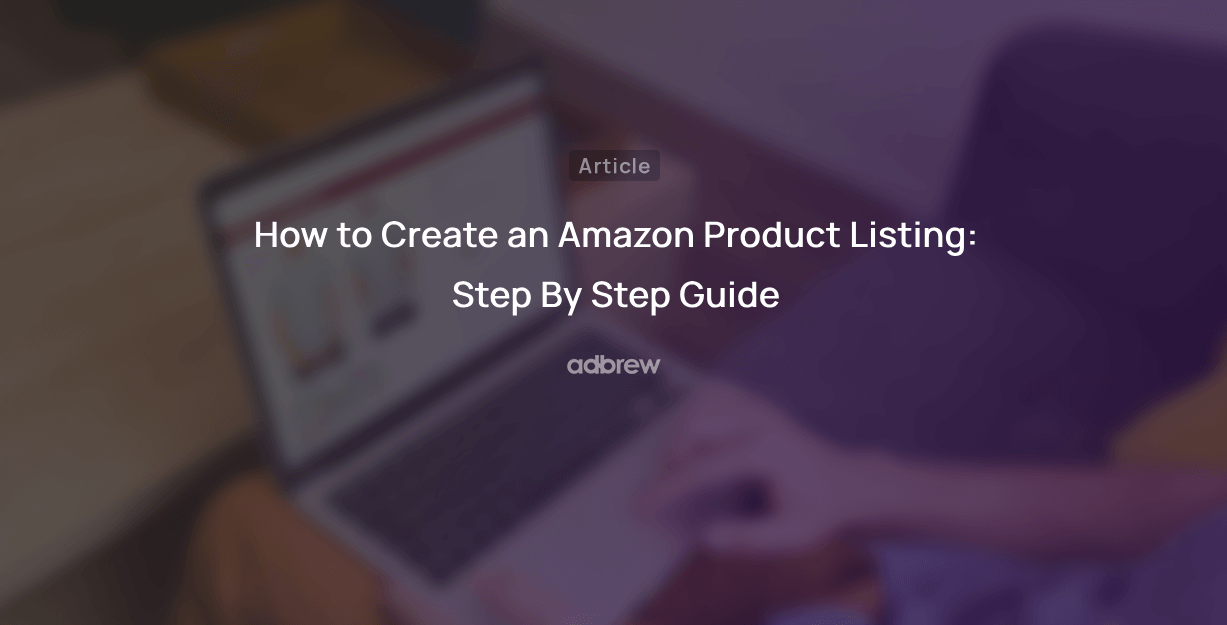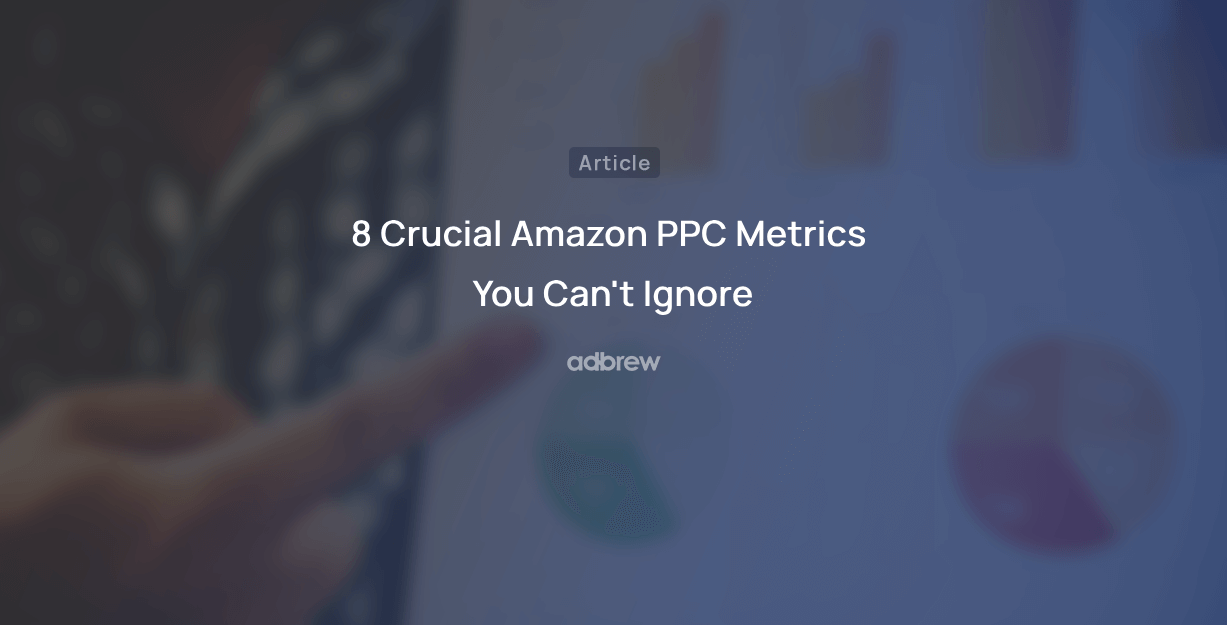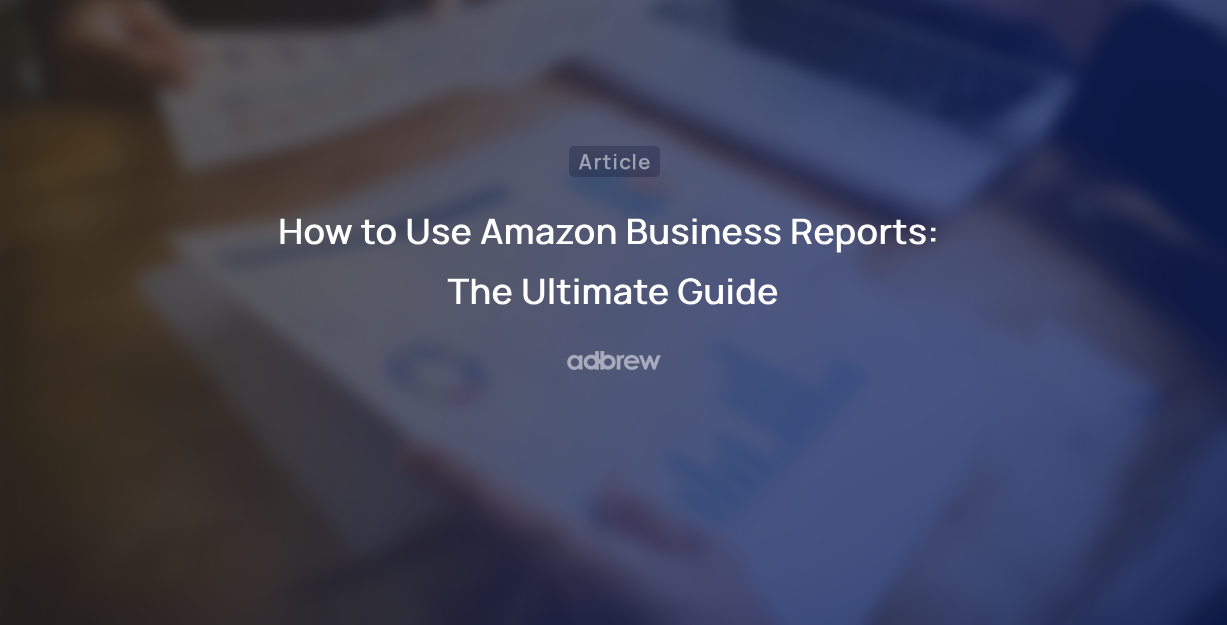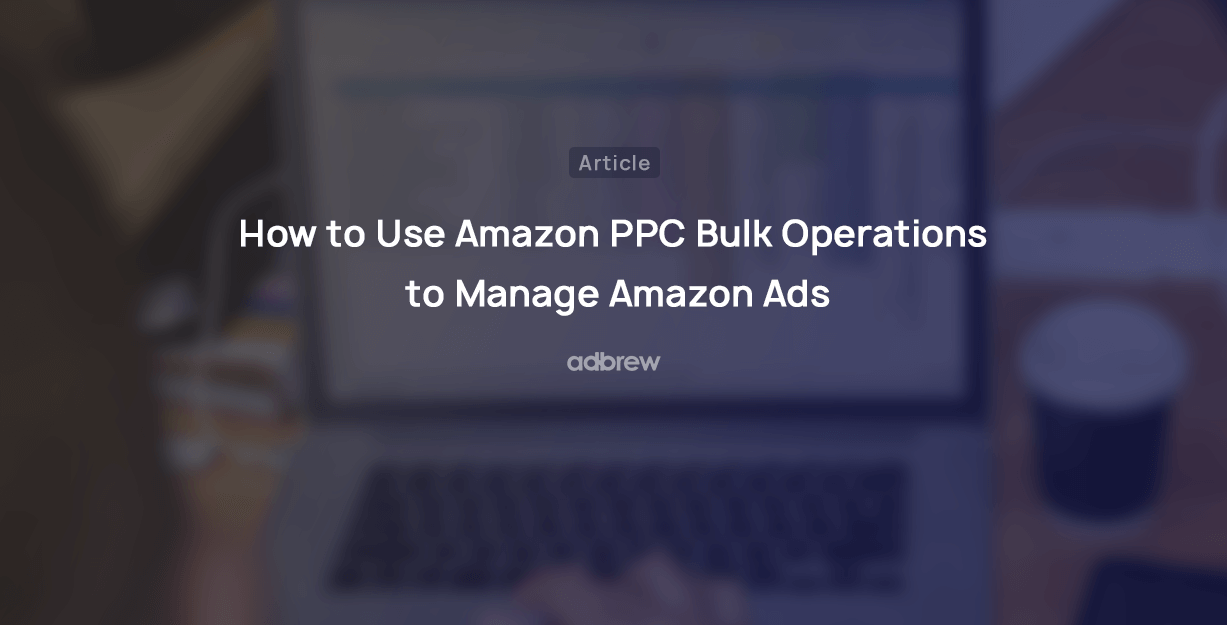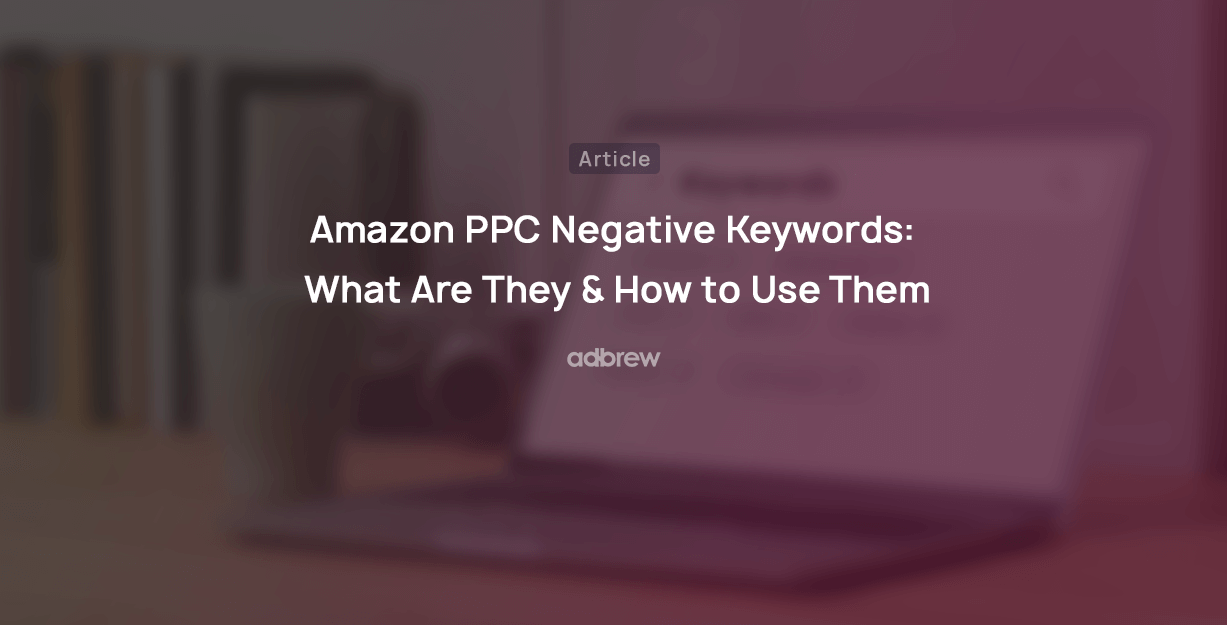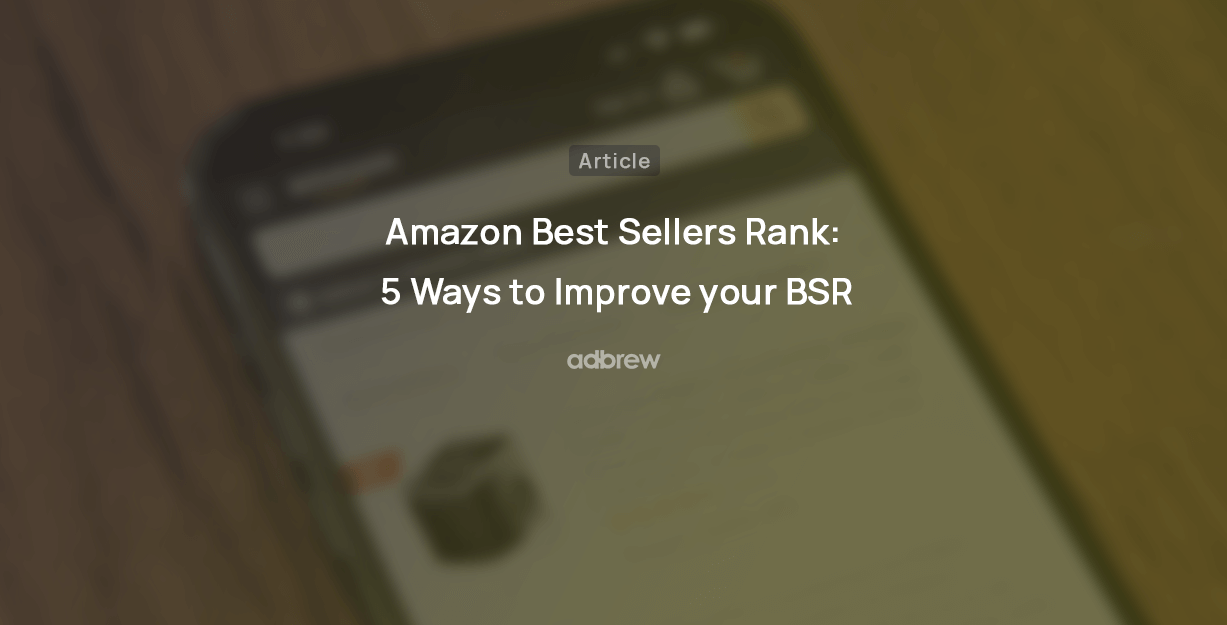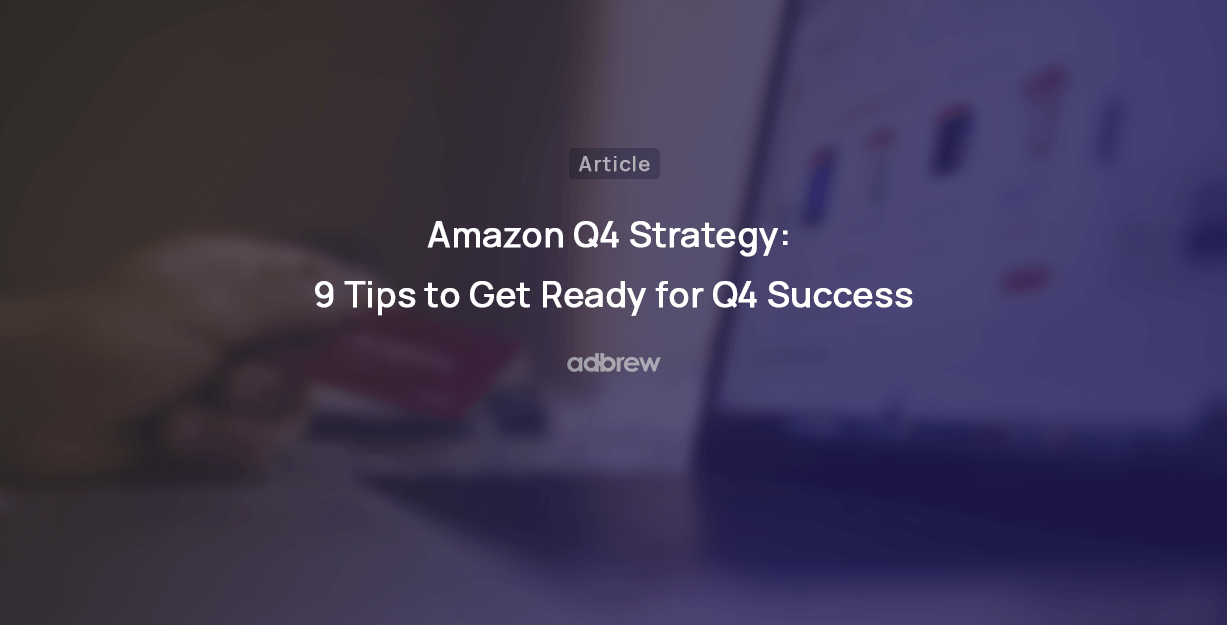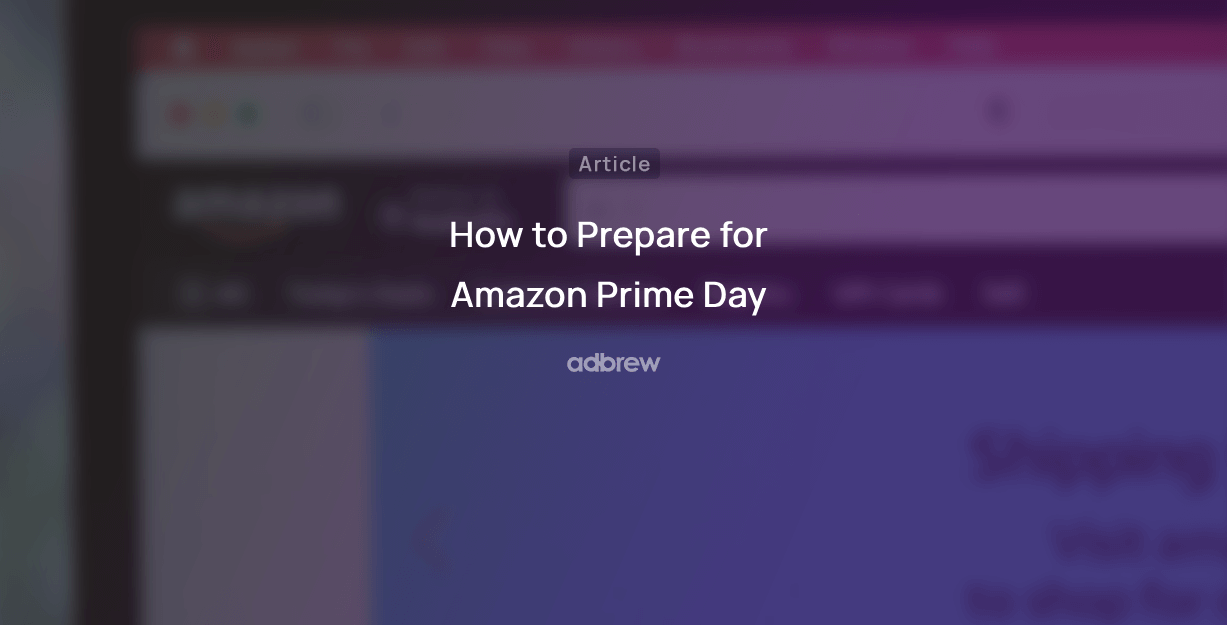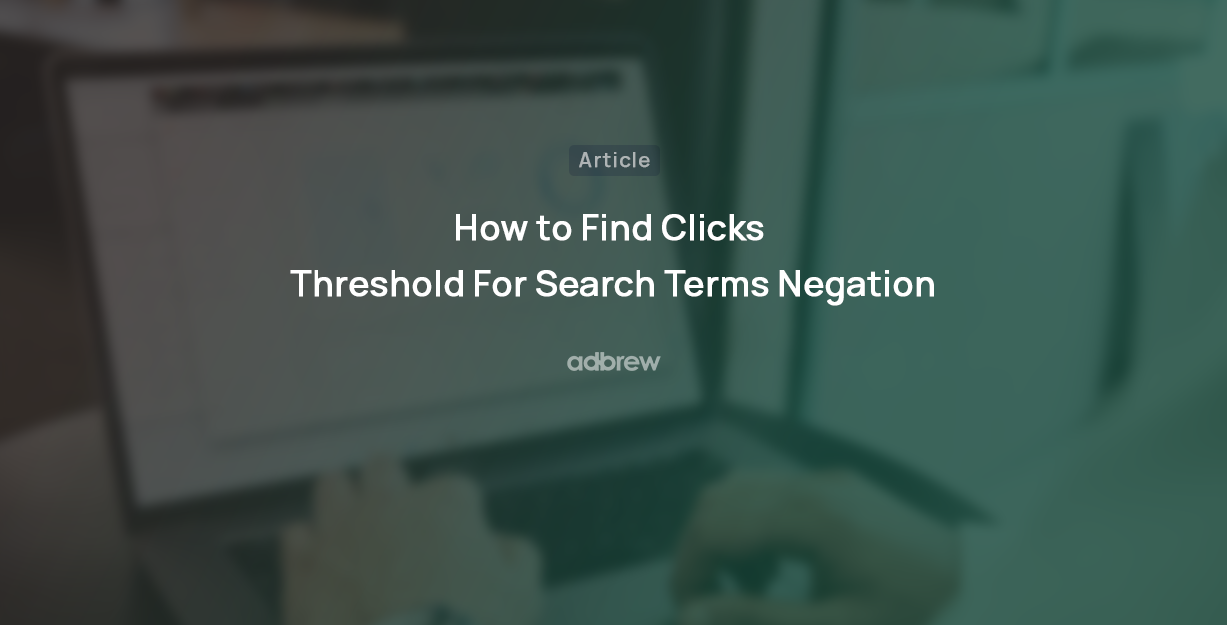
For Amazon sellers, understanding their customers has often felt like navigating a maze without a map.
The missing link?
A lack of enough data to know who’s buying, what they like, and how they shop.
Fortunately, with the launch of more and more reports as part of Amazon Brand Analytics, the landscape is reshaping. Amazon is sharing more and more data for sellers to understand their customers and make informed advertising and product strategies.
New to “brand analytics”? Don’t worry; in this blog post, we will talk about what Amazon Brand Analytics is, how it is useful, and how to access it.
What is Amazon Brand Analytics?
Brand Analytics is an add-on data reporting tool available for brand-registered sellers on the Amazon Marketplace. It provides a collection of reports and data around customer shopping patterns, search queries, purchasing behavior, and more. Sellers can use this data to optimize their product visibility, pricing, and advertising strategy.
Who Can Use Amazon Brand Analytics?
In order to access Amazon Brand Analytics tools, sellers need to be enrolled in the Amazon Brand Registry program and have a registered trademark for their brand. This ensures that only registered brand owners have access to these valuable insights, making it an exclusive tool for those serious about their business on Amazon.
How to Access Amazon Brand Analytics Dashboard?
Step 1: First of all, ensure you are a brand-registered seller.
Step 2: Log in to your Seller Central account.
Step 3: From the Seller Central home screen, navigate to the main menu.
Step 4: Go to Brands > Brand Analytics from the menu.
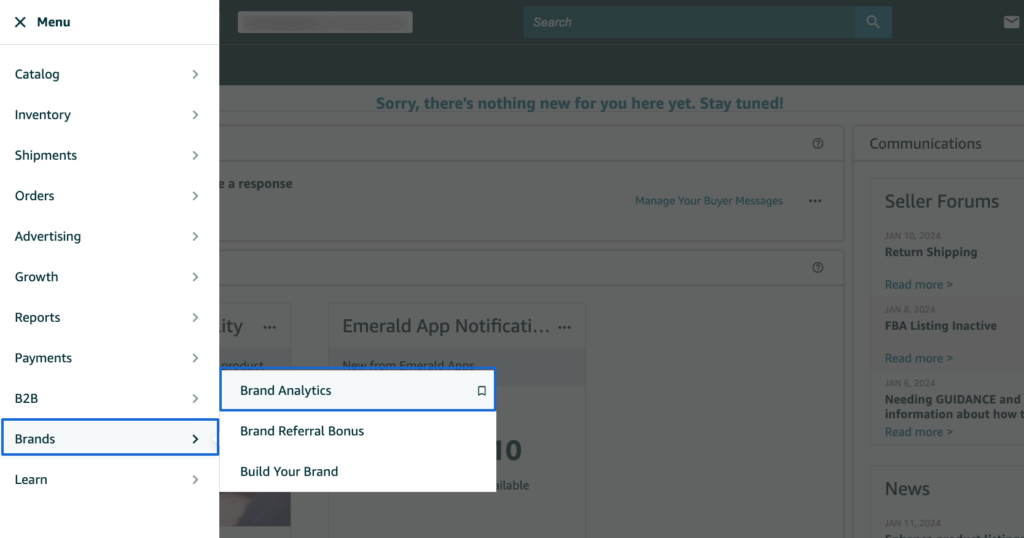
If you do not see this option, it likely means you are either not a brand-registered seller or the brand owner has not shared access to this report with you.
What does Amazon Brand Analytics include?
Amazon Brand Analytics offers a comprehensive set of seven reports, neatly organized into three distinct categories:
Search Analytics: This section comprises three reports – Search Catalog Performance, Search Query Performance, and Top Search Terms. These reports provide valuable insights into how customers discover and engage with your product at different stages of the sales funnel.
Customer Behavior Analytics: Within this category, you’ll find three reports – Repeat Purchase Behavior, Demographics, and Market Basket Analysis. These reports offer a deep understanding of your customer profile and their shopping behavior on the Amazon platform.
Customer Loyalty Analytics: The final category presents a dashboard that provides insights into the level of loyalty customers have with your brand.
Now, let’s take a closer look at each of the Amazon Brand Analytics reports to understand their significance and how they can empower sellers with actionable insights.
1. Search Catalog Performance Report

The Search Catalog Performance dashboard provides a clear view of how your catalog performs based on shopper search behavior within the chosen timeframe. It displays key interaction metrics for all your products, spanning the entire shopping journey – from impressions to clicks, adding to cart, and eventual purchases.
Here are the essential metrics featured in this report for each ASIN:
Search Funnel – Impressions:
Impressions: The total number of times your product was displayed on the search result page within the selected time period.
Search Funnel – Clicks:
Clicks: The overall number of times shoppers clicked on your product when it appeared on the search result page in the selected time period.
Click Rate (CTR): Indicates the percentage of clicks to impressions for clicks originating from the search results page.
Search Funnel – Cart Adds:
Cart Adds: The total instances your product was added to the cart when shoppers clicked on it in the search result page.
Search Funnel – Purchases:
Purchases: The total instances your product was purchased after shoppers clicked on it in the search result page.
Search Traffic Sales: The cumulative sales revenue for your product during the selected time period, originating from the search results page.
Conversion Rate: Represents the percentage of purchases to clicks for clicks originating from the search results page.
How to use Search Catalog Performance Report?
- This report plays a crucial role in comprehending how shoppers engage with your products throughout various phases of the buying process, helping identify potential areas of customer disengagement.
- If specific products exhibit a notably low Click-Through Rate (CTR), consider enhancing the product images and title. Improving these elements can positively impact CTR.
- Similarly, if certain products have a low Add to Cart rate, optimize the product copy and pricing. Crafting compelling product descriptions and ensuring competitive pricing can entice shoppers to proceed with the purchase.
2. Search Query Performance Report
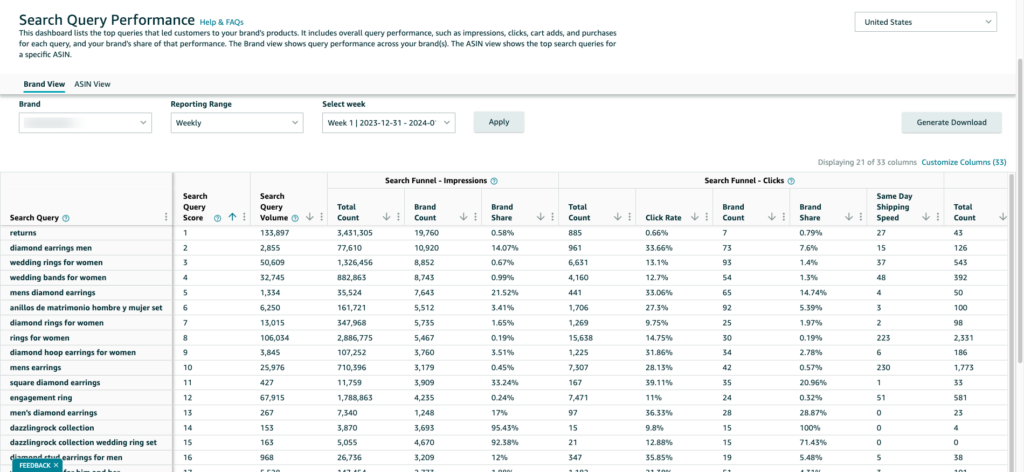
Search Query Performance dashboard offers visibility into your brand or product’s performance for specific search terms based on shoppers’ search behavior. In the chosen timeframe, it presents metrics for the top terms in your brand catalog or ASIN, such as impressions, clicks, add to cart, and purchases. Notably, this report includes data on both your products and the overall products competing for the same search term, allowing for easy benchmarking against your category average.
Here are the key metrics you’ll find in the Search Query Performance report:
- Search Query: The query searched by customers.
- Search Query Score: The rank of each search query from top to bottom performance (Amazon currently shares the top 1000 ranked queries).
Search Funnel – Impressions:
- Total Count: The total number of impressions for all ASINs originating from the search result.
- Brand Count/ASIN Count: The total number of impressions for Brands/ASINs originating from the search result.
- Brand/ASIN Share: The percentage share of impressions from the brand’s catalog/ASINs compared to the total count for the query.
Search Funnel – Clicks:
- Total Count: The number of clicks for the query originating from the search result.
- Brand/ASIN Count: Total clicks from the brand’s catalog/ASINs for this query.
- Brand/ASIN Share: Percentage share of clicks from the brand’s catalog/ASIN compared to the total count for the query.
- Click-Through Rate (CTR): The total number of clicks over search query volume count.
Search Funnel – Cart Adds:
- Total Count: The number of Cart-adds for the query originating from the search result.
- Brand/ASIN Count: Total cart-adds from the brand’s catalog/ASIN for this query.
- Brand/ASIN Share: The percentage share of cart-adds from the brand’s catalog/ASIN compared to the total count for the query.
- Cart Add Rate: The total number of Cart-adds divided by Search Query Volume.
Search Funnel – Purchases:
- Total Count: The number of purchase actions for the query originating from the search result.
- Brand/ASIN Count: Total purchases from the selected brand’s catalog/ASIN for this query.
- Brand/ASIN Share: Percentage share of purchases from the brand’s catalog/ASIN divided by the total count for the query.
- Purchase Rate: The total number of purchases divided by the Search Query Volume count.
How to use Search Query Performance Report?
- Are your click-through rate (CTR) and conversion rate surpassing the category average for a search query? Take advantage of this by ramping up your advertising efforts on those high-performing terms to boost your sales.
- Conversely, if your CTR and conversion rate are lagging, even though the keywords appear relevant, consider optimizing your product copy and pricing. This can help attract more potential shoppers to your product.
- Uncover keywords that are driving sales to your product but have a low market share. If these keywords are missing from your Amazon ads campaign, consider targeting them to enhance your visibility and potentially capture a larger market share.
- For keywords with low impressions and click share, strategically incorporate them into your product listing. This can improve the overall visibility of your product and increase the likelihood of attracting more clicks.
- Additionally, analyze the keywords that drive sales during specific seasons by examining the top search terms for that period. Tailor your strategy to capitalize on seasonal trends and further optimize your product listings for maximum impact.
3. Top Search Terms Report

Unlike the Search Query Performance report, which specifically highlights top search terms relevant to your brand, the Top Search Term report provides a broader, market-level breakdown of all popular search terms on the marketplace and their search frequency rank.
In this report, you have the flexibility to search for top keywords by using specific ASINs, brand names, categories, or keywords within a chosen timeframe. For each search term, the report displays the top 3 corresponding clicked products, the top 3 clicked categories, and the top 3 clicked brands.
This valuable tool becomes a significant asset in identifying keywords and queries that actively contribute to driving sales for your competitors. By leveraging these insights, you can strategically incorporate these keywords into your product pages and advertising, ultimately boosting sales for your products.
How to Use the Top Search Terms Report?
- Discover the most effective keywords that drive sales for your product or brand.
- Identify the keywords that generate the highest number of clicks for a product.
- Find new keywords ideas to use in your product listing.
- Identify fresh keywords to incorporate into your advertising campaigns, and use them strategically.
4. Repeat Purchase Behavior Report

The Repeat Purchase Behavior Report is an essential tool that offers crucial insights into repeat customers, their total count, order contribution share, and sales linked to repeat purchases. Understanding this data can help sellers identify products with strong customer retention and tailor their marketing approaches accordingly.
Here’s a breakdown of the essential metrics:
- Product Title and ASIN: The title and ASIN (Amazon Standard Identification Number) of the product.
- Number of Orders: Total number of orders attributed to a specific Brand or ASIN.
- Sales: Revenue generated from products ordered by customers who made more than one order within the selected timeframe.
- Change vs. Prior Period: Percentage change in repeat ordered product sales compared to the closest period preceding the selected reporting timeframe.
- % Share of Total Sales: Repeat ordered product sales as a percentage of the overall ordered product sales.
Repeat Ordered Units:
- Units: The total number of product units purchased by customers who made more than one order.
- Change vs. Prior Period: Percentage change in repeat ordered units compared to the closest period preceding the selected reporting timeframe.
- % Share of Total Sales: Repeat ordered units as a percentage of the total unit sales.
Repeat Customer Count:
- Repeat Customers: The count of unique customers who placed more than one order within the selected reporting timeframe.
- Change vs. Prior Period: Percentage change in repeat customers compared to the closest period preceding the selected reporting timeframe.
Repeat Customer Share:
- Share of Customers: The percentage of repeat customers among all customers who placed an order within the selected reporting timeframe.
- Change vs. Prior Period: Percentage point change in repeat customer share compared to the closest period preceding the selected reporting timeframe.
How to Use the Repeat Purchase Behaviour Report?
- Gain clarity on how repeat purchases influence your overall revenue.
- Identify the top-performing products that drive the majority of repeat purchases.
- Boost your repeat purchase numbers by implementing effective remarketing campaigns.
5. Demographics Report
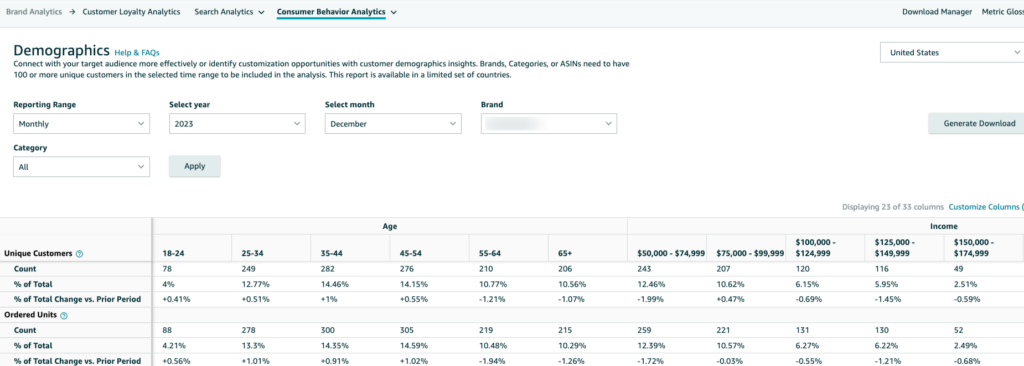
The Demographics Report offers a detailed overview of the demographic composition of customers purchasing from our brand. Here are the key metrics presented in this report:
Sales by Age Group: Amazon categorizes customer age profiles into six different brackets, aiding in the identification of the ideal age group for your product.
Household Income: Explore the number of unique customers falling into various income brackets, providing insights into the economic diversity of your customer base.
Education Status: Amazon provides information on a customer’s educational level, offering valuable data that can impact your sales approach.
Gender: Identify the number of unique customers categorized as male or female.
Marital Status: Determine if a particular item is preferred by single or married individuals
How to Use the Demographics Report?
Utilize this report to build a clear picture of your ideal customer profile.
Armed with this information, refine your marketing strategies, creative content, and messaging to align seamlessly with the insights derived from the Demographics Report.
This targeted approach ensures your brand resonates effectively with the demographic characteristics of your customer base.
6. Market Basket Analysis Report
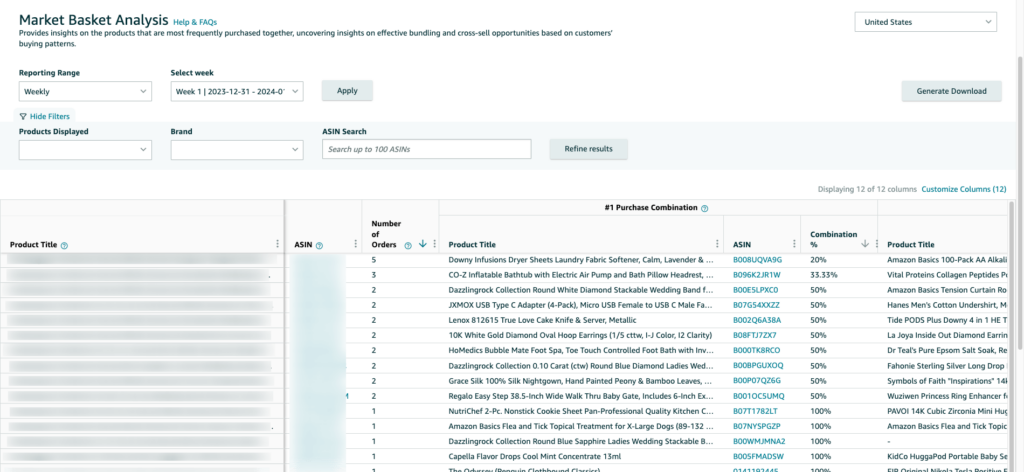
The Market Basket Analysis report sheds light on products frequently purchased together, offering valuable insights into effective bundling and cross-selling opportunities based on customers’ purchasing patterns.
For individual ASINs, the report presents three distinct purchase combinations, each accompanied by the purchase combination metric. The Purchase Combination % indicates the percentage of orders containing both the selected ASIN and the #1, #2, or #3 Purchase Combination ASIN, relative to the total number of orders with at least two different items, including the selected ASIN.
How to Use Market Basket Analysis Report?
Product Bundle: Leverage the report to craft bundles of your products that align with the purchase combinations highlighted by Amazon.
Cross-Targeting: Identify similar products and strategically target them with Amazon SP and SD Ads. This approach encourages shoppers to choose your product over competitors when making a purchase.
Competitor Insight: Target products from competitors that shoppers are actively buying. By doing so, your product becomes visible, increasing the likelihood of attracting these shoppers to make a purchase.
7. Customer Loyalty Analytics Dashboard
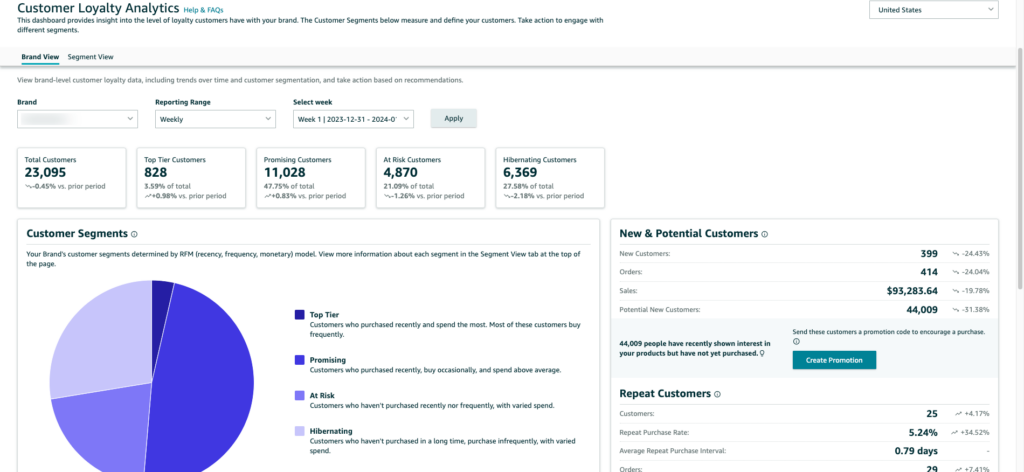
The Customer Loyalty Analytics report sheds light on your customer’s purchasing behavior and identifies the segments that showcase the highest loyalty to your brand. Within the chosen timeframe, customers are categorized into four segments: Top Tier, Promising, At Risk, and Hibernating.
Top Tier Customers: Those who recently made a purchase, spending the most, and are frequent buyers.
Promising Customers: Recent purchasers who buy occasionally but spend above average.
At Risk Customers: Those who haven’t made recent or frequent purchases, with varied spending patterns.
Hibernating Customers: Those who haven’t purchased for an extended period, buy infrequently, and exhibit varied spending.
This report allows you to track the weekly, monthly, or quarterly trends of these customer segments, offering insights into how they evolve over time.
How to Use Customer Loyalty Analytics Report?
With Amazon’s recent introduction of Brand Tailored Promotions, leverage this data to create customized deals and discounts for different customer segments. This targeted approach aims to increase brand loyalty and strengthen their connection with your brand.
Frequently Asked Questions:
Amazon Brand Analytics is a collection of reports available for brand-registered sellers. These reports provide accurate market data, encompassing customer behaviors, search trends, and buying habits on the platform. This information empowers brand owners to formulate data-backed marketing strategies.
To access the Amazon Brand Analytics tool, open the left sidebar menu in your Seller Central account and navigate to Brands > Brand Analytics.
To get the Amazon Brand Analytics tool in Seller Central, you need to be a brand-registered seller on Amazon. If you do not see it in your dashboard, you may not meet the criteria for brand registration.
Amazon Brand Analytics offers several advantages to brand-registered sellers. Here are some key benefits:
Customer Insights: It provides valuable information about customer shopping patterns, search queries, and purchasing behavior, enabling sellers to understand their customers better.
Competitive Analysis: Amazon Brand Analytics helps identify top-performing products and brands in your category, providing an opportunity for benchmarking and competitive analysis.
Improved Product Visibility: With insights into popular search terms and customer behavior, sellers can optimize their product listings to improve visibility and conversion rates.
Data-Driven Decision Making: The detailed reports provided by Amazon Brand Analytics allow sellers to make informed decisions about product pricing, advertising strategy, and inventory management.
Enhanced Marketing Strategy: By understanding customer demographics and their buying habits, sellers can tailor their marketing strategies to target the right audience effectively.
In Amazon Brand Analytics, you can access key reports such as the Search Query Performance Report, Market Basket Analysis Report, Search Catalog Performance Report, Amazon Search Terms Report, and the Repeat Purchase Behavior Report. These reports offer valuable insights into customer behavior and market trends, helping you make informed business decisions.
There are multiple Amazon Brand Analytics report that can help you understand the queries shoppers use to find your products, how they interact with your product after locating it in search results, and their loyalty to your brand after the first purchase. Having such a granular understanding of your customers can help you develop targeted marketing strategies.
Final Thoughts:
Through this blog post, we’ve explored how Amazon Brand Analytics is a powerful tool that offers valuable insights into customer behavior, search trends, and competitor strategies. By understanding the functionality of each report and learning how to use it effectively, you can optimize your product listings, and advertising campaigns, and ultimately maximize your brand’s potential on the Amazon marketplace.
Related Blogs
In today’s competitive retail landscape, reaching the right audience at the right time is crucial for success. Walmart’s Demand Side […]
In today’s fast-paced eCommerce landscape, shoppers demand speedy delivery. Walmart has responded by offering 2-day shipping, giving sellers on the […]
Running successful Walmart advertising campaigns takes more than just setting them up—it requires ongoing optimization. A Walmart PPC (Pay-Per-Click) audit […]
Are you ready to tap into the massive potential of Walmart Marketplace? With millions of daily visitors and a loyal […]
In the world of e-commerce, Amazon and Walmart reign supreme, dominating the retail landscape. These two giants offer vast opportunities […]
Are you a brand owner struggling to maintain control over your products on Walmart? The Walmart Brand Portal is here […]
Are you dreaming of a passive income stream from your Walmart store? The allure of an automated Walmart store with […]
Are you a seller looking to tap into the massive market of private-label brands? Walmart, one of the world’s largest […]
Tired of your Walmart products getting lost in the shuffle? In this blog post, we’ll dive into the essential strategies […]
Ever wondered why some Amazon sellers seem to have a magic touch with product bundles? It’s not luck—it’s strategy. Bundling […]
If you’re a Walmart seller looking to grow your business through retail media, Walmart Connect could be a game-changer. But […]
If you’re an Amazon seller, you may have noticed a portion of your inventory marked as “reserved” without knowing exactly […]
Have you ever wondered what managing your own Amazon orders is like? Switching from Fulfilled by Amazon (FBA) to Fulfilled […]
Walmart Marketplace offers an exciting opportunity for sellers to reach a vast audience by listing their products on Walmart’s platform. […]
Selling products on online marketplaces has become a vital strategy for businesses to reach more customers. If you’re looking to […]
Are you a Walmart seller aiming to improve your visibility and sales? In this blog, we will explore Walmart SEO, […]
As an Amazon brand owner, maintaining control over your product listings is essential to protect your brand’s reputation and customer […]
Introduction Tired of losing out on Walmart sales to competitors? Want to know the secret to consistently winning the Buy […]
Are you an Amazon seller wondering what the IPI score is and how it affects your business? Look no further! […]
Introduction Starting an Amazon subscription box business presents a unique opportunity to tap into the growing trend of curated, recurring […]
Thinking about using Fulfillment by Amazon (FBA) to sell on the Amazon marketplace? Awesome! But before you box up your […]
Thinking about using Fulfillment by Amazon (FBA) to streamline your Amazon business? While FBA offers a convenient way to store […]
For FBA sellers, the Amazon Buy Box is the holy grail of product visibility. But with constant algorithm updates and […]
Have you ever wished you could offer customers pre-made packages of complementary products without the hassle of physically bundling them […]
Have you ever wanted to create a more branded and engaging presence for your products on Amazon? An Amazon storefront […]
When selling products on Amazon, it is crucial to follow their packaging requirements, rules, and guidelines. Proper packaging ensures that […]
A/B testing on Amazon can significantly enhance your product listings and boost sales. This method, also known as split testing, […]
Have you ever browsed Amazon and stumbled upon a product with a little blue badge that reads “Amazon’s Choice”? It […]
Introduction Selling on Amazon can be a great way to get your products out there. But once someone buys your […]
Ever feel like you’re missing something in your Amazon PPC Search Terms report? You might be! Sure, they show what […]
Amazon can be a fantastic platform to reach new customers, but keeping your virtual shelves stocked can get tricky. That’s […]
Navigating Amazon as a new seller can be tough, but there are tools and programs available to help. Amazon’s Launchpad […]
Have you ever scrolled through an Amazon search result page and noticed product recommendations nestled alongside the standard listings? These […]
Finding time for yourself while selling on a competitive marketplace like Amazon can be challenging. As a seller, your main […]
Starting an E-commerce business has become quite easy with Amazon, but it also brings heavy competition. Millions of Amazon sellers […]
As an Amazon seller, you know the importance of getting your products seen. But with millions of listings, how do […]
Ever scrutinized an Amazon product page and noticed the cryptic “Sales Rank”? Wondering what it means and how it impacts […]
Millions of products compete for customer attention on Amazon’s search results page, making it tough for your brand to stand […]
Are you selling products on Amazon and looking to increase your sales? This blog is for you. We’ll share tips […]
Are you an Amazon seller looking to boost your brand visibility and profitability? Are you feeling stuck in the cycle […]
Ever wonder what drives your online shopping habits? Perhaps a captivating product description, or an eye-catching professional photo? As it […]
For any seller on Amazon, understanding the A9 algorithm is crucial for success. This complex algorithm dictates which products appear […]
Are you an Amazon seller looking to turn those single purchases into recurring revenue? Look no further than the Subscribe […]
Amazon has become a go-to platform for all e-commerce business owners to launch and scale their e-commerce brands online. But […]
Mother’s Day, a time to celebrate the incredible women who raised us, is a prime opportunity for Amazon sellers to […]
In the ever-competitive landscape of Amazon, ranking high in organic search results is crucial for driving sales. While you might […]
If you’ve ever found yourself scratching your head over Sessions and Pageviews on your Amazon business reports, you’re not alone. At […]
Amazon is a massive marketplace, attracting millions of customers with diverse needs, preferences, budgets, and mindsets for shopping. To effectively […]
With Amazon boasting over $575 billion in retail sales for 2023, it’s no wonder so many sellers flock to its […]
Advertising on Amazon through pay-per-click campaigns can significantly enhance product visibility and sales for sellers. However, mastering Amazon PPC, with […]
Have you heard of the terms copyright infringement and plagiarism? If so, then Amazon Brand gating won’t be unfamiliar to […]
If you are running ads on Amazon, you’ll come across a sea of data in your advertising console. But does […]
Have you heard of the terms copyright infringement and plagiarism? If so, then Amazon Brand gating won’t be unfamiliar to […]
In the fast-paced world of e-commerce, where shoppers are bombarded with choices, standing out on platforms like Amazon is paramount […]
Are you planning to start an Amazon FBA store? If so, you’ll encounter a unique term – FNSKU. This seemingly […]
Introduction As an Amazon seller, you understand the power of reviews. They’re the lifeblood of trust and conversion on the […]
Are you struggling to get Amazon reviews on your product? Well, you are not alone! Reviews are the backbone of […]
Are you tired of bland Amazon product listings failing to grab attention? In today’s competitive online marketplace, standing out is […]
As an Amazon seller, understanding how your brand performs throughout the customer journey is vital for success. However, until recently, […]
As an Amazon seller, optimizing your business and maximizing profits relies heavily on data analysis. One invaluable tool for gaining […]
Are you struggling to get noticed on Amazon’s massive platform? Do your products get lost in a sea of similar […]
For any Amazon seller getting into the world of sponsored advertising, understanding the Advertising Cost of Sale (ACoS) is crucial. […]
A well-executed product launch on Amazon can be the key to unlocking success and gaining a competitive edge. As the […]
In the ever-evolving landscape of e-commerce, distinguishing between keywords and search terms is vital for optimizing product visibility and driving […]
Ever felt like you are throwing darts in the dark when it comes to your marketing efforts outside Amazon for […]
Amazon, the e-commerce giant, has successfully concluded a robust business year with outstanding performance in quarter 4. The most recent […]
Picture this: you have a great product on Amazon, but it’s not selling well despite having attractive images and a […]
The advertising landscape is evolving, and viewers are rapidly migrating from traditional cable TV to streaming platforms. This presents a […]
Feeling lost in the Amazon discount jungle? Struggling to reach the right customers and entice them to make the purchase? […]
Are you losing your product in the deep ocean of Amazon product listings? Want your product to stand out, rank […]
For years, Amazon sellers were in the dark. They couldn’t see what keywords customers were using to find their products, […]
Selling on Amazon can be tough with so many others doing the same in your category. That’s why it’s super […]
For Amazon sellers, understanding their customers has often felt like navigating a maze without a map. The missing link? A […]
Have you ever felt like your Amazon advertising campaigns are lost in a tangled jungle of keywords? You’re not alone. […]
When did you last give your Amazon PPC account a checkup? Regular Amazon PPC audits are crucial to ensure the […]
Embarking on the path of online selling? If so, you’re likely aware that Amazon is your ultimate destination. With a […]
Ever felt like your product is lost in the vast Amazon jungle? You’re not alone. With millions of shoppers actively […]
Amazon Sellers selling on the Amazon marketplace usually utilize Amazon advertising without keeping a close eye on the TACoS metric. […]
The rush of Black Friday and Cyber Monday might be over, but the opportunity for continued sales growth extends beyond […]
In the fierce Amazon advertising domain, where competition rises and costs increase, understanding and keeping track of the right metrics […]
Have you ever felt the frustration of campaigns going out of budget, leading to missing out on potential sales, or, […]
Amazon PPC campaigns can be a powerful tool for driving traffic and sales to your products. However, without proper structure, they […]
The Amazon Cyber Monday and Black Friday sales week is just around the corner. It’s no secret that this marks […]
Whether you are creating a new advertising campaign or optimizing existing ones, doing it manually from the Amazon ad console […]
Want to know what search terms people use to visit or purchase your product on Amazon? If yes, you’re in […]
When you are spending dollars or even more to get a click on your Amazon ads, you want to ensure […]
Are you an Amazon seller looking to maximize your profits and minimize your advertising costs? If so, you’re not alone. Many […]
Are you exclusively relying on traditional metrics such as CTR, CPC, CVR, or ROAS to make your campaign optimization decisions? […]
Navigating the ever-evolving landscape of Amazon’s online marketplace is essential for any seller looking to thrive on the platform. Among […]
As the holiday season approaches, businesses are gearing up for the highly anticipated Q4 rush. To ensure a successful Q4, […]
Do you regularly review your Amazon advertising reports? If not, you may be missing out on numerous opportunities. Amazon […]
Whether you’ve just launched a new product or have been selling on Amazon for a while, advertising on the platform […]
Amazon PPC bidding strategies that you choose play a significant role in the success of your Amazon Ads campaigns. As […]
Have you ever heard of a “catch-all campaign”? This single campaign can generate extra sales for you at a very […]
Amazon Prime Day is one of the largest global e-commerce sales events, attracting millions of customers worldwide. But how do […]
Are you looking to boost your brand’s visibility and drive more sales on Amazon? Look no further than Amazon Sponsored […]
Succeeding on Amazon in 2023 isn’t easy. Just listing your products and hoping for the best won’t work anymore. You […]
Are you bidding the same amount for all your ad placements on Amazon? If yes, then you’re missing out on […]
Whether you are looking to boost product discovery or target audiences further down the sales funnel who have already engaged […]
We, at Adbrew catalyze millions of dollars of ad spend monthly through our platform, with Sponsored Product Ads being the […]
Do you want to know how many clicks you should give a search term before adding it as negative in […]
Think of your product listing as a guiding light on the Amazon marketplace. It’s your chance to grab attention, tell […]
It is no longer a secret that shopping behavior on Amazon varies over the day. This is the reason why […]
Are you struggling to get the most out of your advertising budget on Amazon? Do you find that your campaigns […]
Ever run an Amazon Ad campaign and wondered why some sales weren’t directly linked to the products you advertised? That’s […]
If you’re managing Amazon PPC ads, it’s essential to have an effective and organized approach for target harvesting and movement. […]






